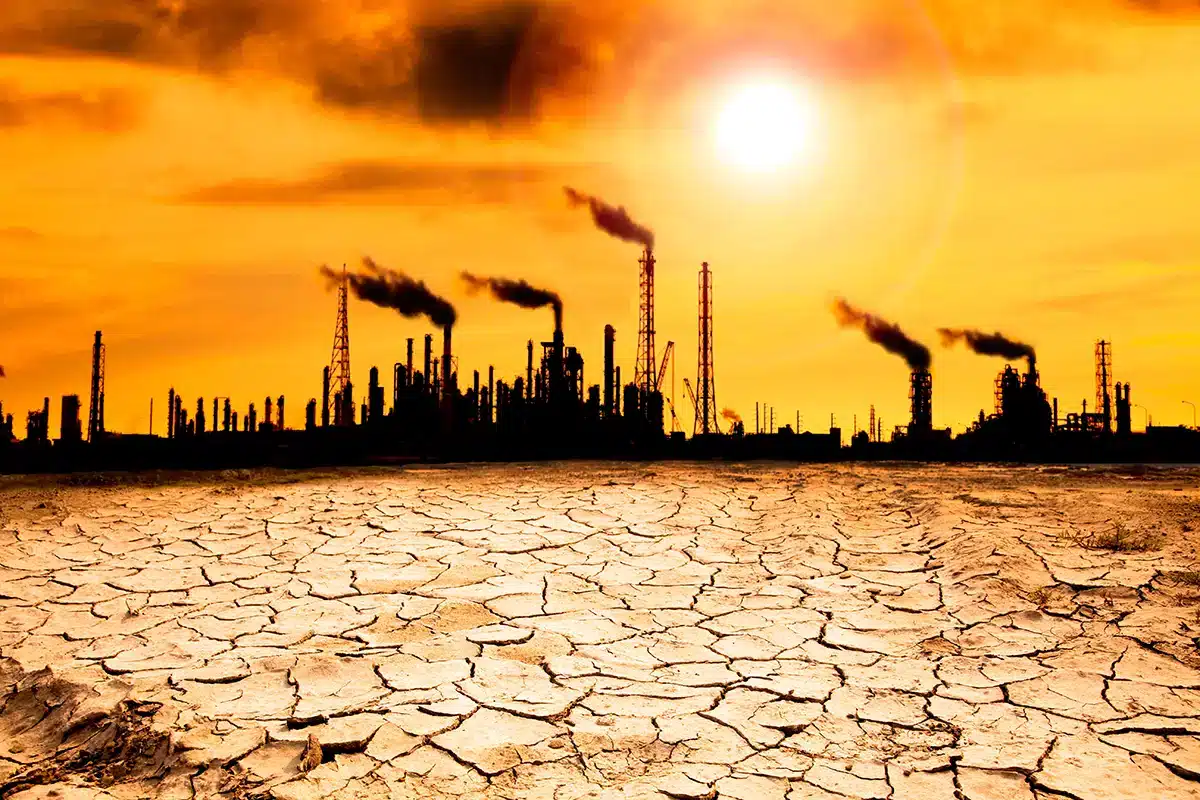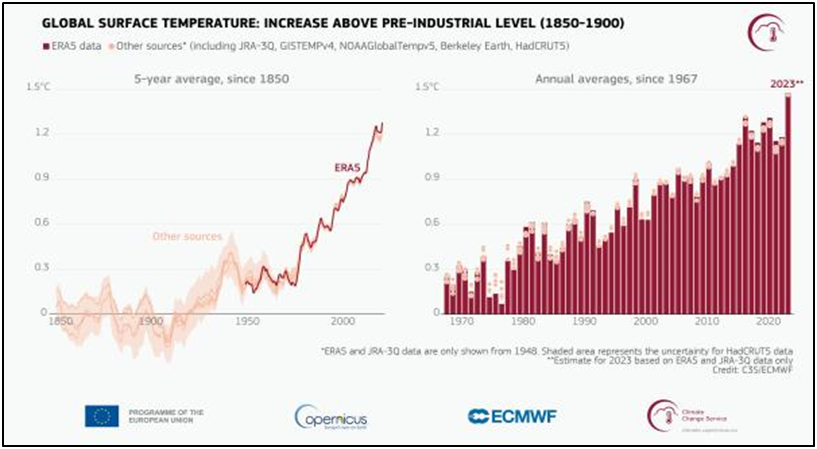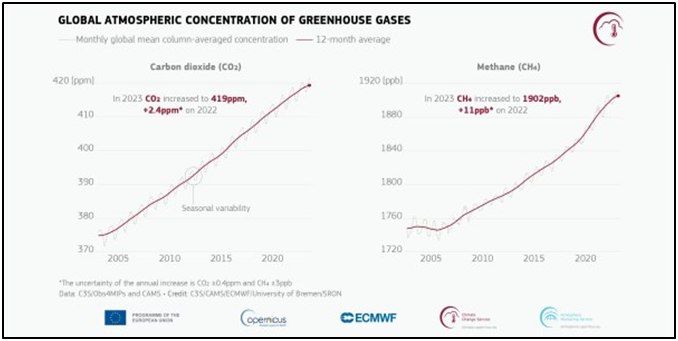What’s in Today’s Article?
- Background
- Reasons Behind 2023 Being the Warmest Year
- What Could Happen Now?
Background
- As per the Europe’s Copernicus Climate Change Service (C3S), 2023 was the warmest year since records began in 1850, beating the previous record of 2016.
- The announcement said temperatures in 2023 likely exceeded those of any year-long period in at least the last 100,000 years.
- Last year was 1.48 degree Celsius warmer than the average of the 1850-1900 pre-industrial level and 0.17 degree Celsius warmer than 2016, C3S said.
- The announcement was confirmation of what scientists have known for a few months.
- The World Meteorological Organisation (WMO) had already said in November that 2023 was set to emerge as the warmest year on record, based on data until October.
- Rising temperatures contributed to a large number of extreme weather events around the world in 2023, including heatwaves, floods, droughts, and wildfires.
- Canada had its most destructive wildfire season (May to September) on record, with more than 45 million acres burned.
Reasons Behind 2023 Being the Warmest Year
- The main driver behind the extreme warming is the increasing greenhouse gas concentrations in the atmosphere.
- Greenhouse gases like carbon dioxide and methane, and water vapor trap the Sun’s energy in the Earth’s system before it escapes to space, causing warming.
- Since the industrial revolution, human activities like burning fossil fuels such as coal, oil, and gases have released unprecedented levels of such gases.
- As a result, the planet has warmed rapidly, especially in recent decades.
- In 2023, greenhouse gas concentrations reached the highest levels ever recorded in the atmosphere, according to C3S and the Copernicus Atmosphere Monitoring Service (CAMS).
- Carbon dioxide concentrations in 2023 were 2.4 parts per million (ppm) higher than in 2022; methane concentrations increased by 11 parts per billion (ppb).
- The onset of El Niño last year, after seven years, also played a key role.
- El Niño refers to an abnormal warming of surface waters in the equatorial Pacific Ocean.
- It increased the likelihood that temperature records would be broken, and there would be more extreme heat in many parts of the world and the ocean.
What Could Happen Now?
- Scientists have suggested that 2024 could be warmer than even 2023.
- Typically, in the past few decades, very hot years have been ones that began in an El Niño state.
- Last year, El Niño didn’t set in until around July, which means that it wasn’t the primary reason behind the abnormal heat at that point. Therefore, 2024 could be hotter than last year.
- It is also possible that the next year may surpass the 1.5-degree Celsius warming threshold across the entire calendar year for the first time.
- The WMO in its 2023 State of Global Climate report said there was a 66% chance that at least one of the years between 2023 and 2027 would cross the threshold.
- A long-term breach of the 1.5-degree limit would unleash far more severe climate change impacts, including more frequent and severe droughts, heatwaves, and rainfall.
- To prevent this, the world needs to urgently implement certain steps, including greenhouse gas emission cuts, which it has failed to do so far.
Q1) What is the purpose of the World Meteorological Organization?
WMO provides world leadership and expertise in international cooperation in the delivery and use of high-quality, authoritative weather, climate, hydrological and related environmental services by its Members, to improve the well-being of all.
Q2) What is La NiNa in simple terms?
La Nina refers to the periodic cooling of ocean surface temperatures in the central and east-central equatorial Pacific. Typically, La Nina events occur every 3 to 5 years or so, but on occasion can occur over successive years.
Source: Why 2023 was the warmest year ever, and what happens now
Last updated on January, 2026
→ Check out the latest UPSC Syllabus 2026 here.
→ Join Vajiram & Ravi’s Interview Guidance Programme for expert help to crack your final UPSC stage.
→ UPSC Mains Result 2025 is now out.
→ UPSC Notification 2026 is scheduled to be released on January 14, 2026.
→ UPSC Calendar 2026 is released on 15th May, 2025.
→ UPSC Prelims 2026 will be conducted on 24th May, 2026 & UPSC Mains 2026 will be conducted on 21st August 2026.
→ The UPSC Selection Process is of 3 stages-Prelims, Mains and Interview.
→ UPSC Result 2024 is released with latest UPSC Marksheet 2024. Check Now!
→ UPSC Toppers List 2024 is released now. Shakti Dubey is UPSC AIR 1 2024 Topper.
→ Also check Best IAS Coaching in Delhi



















